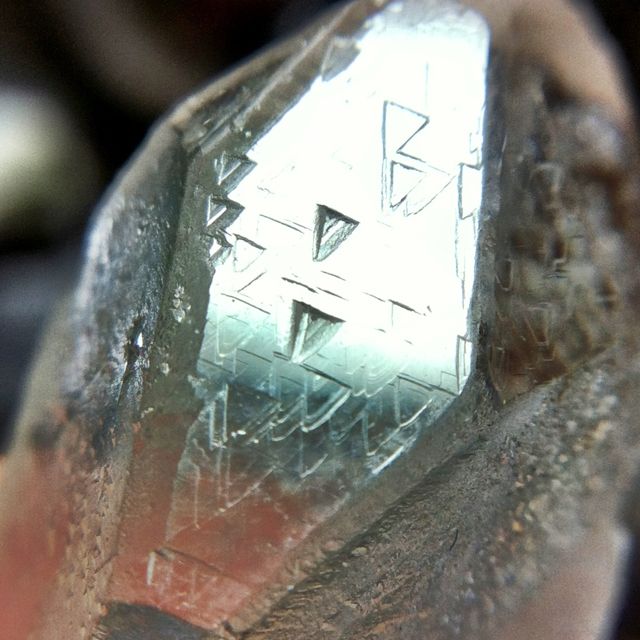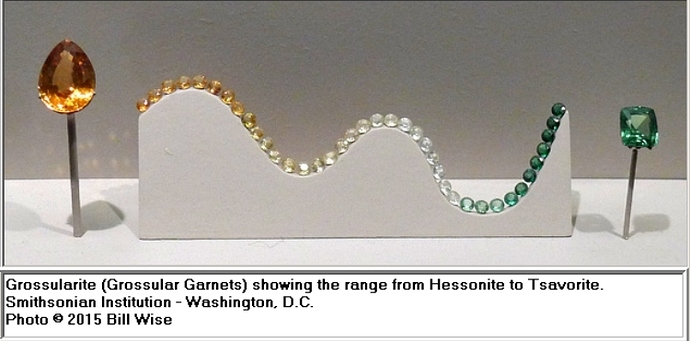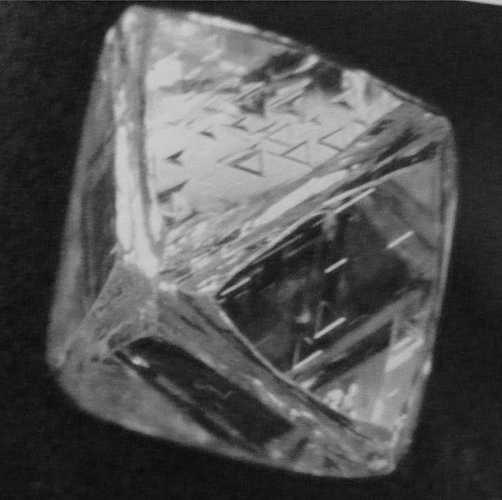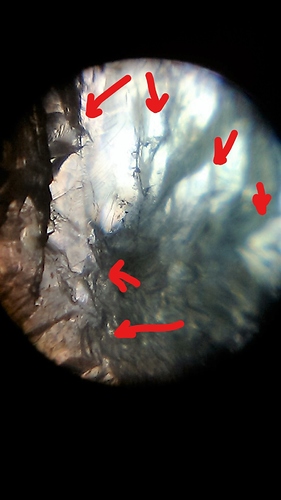Here are some more pictures of the mineral I found in Idaho. The magnified pictures are taken under 100X microscope and are all natural breaks in the stone. I believe it to be diamond, but if anyone can help me out, it would be much appreciated. Eventually, once I am able to definitively identify it, I would like to sell it. If you have any questions, please ask.
Not a diamond. {system is requiring a 20 character reply - LOL}
So, what is it? With the extra characters, you could have at least provided an honest answer…
Answers don’t get any more honest than that. It is NOT a diamond. See those conchoidal fractures in your photos? Diamonds have step fractures like lego blocks or they cleave smooth as glass. Your specimen is completely devoid of any trigons as well. There is evidence of hydrothermal activity in your specimen - again, not a diamond. Place your specimen in the polariscope and see if it is doubly refractive. If so, then you have probably one of the following: 1. Quartz; 2. White Topaz; 3. White sapphire. If the specimen is singly refractive, you most likely have a natural glass. You can always come to my lab in Las Vegas if you need it positively identified. Michael at www.thediamondgrader.com Gem Identification fees start at $25. Certified written appraisals start at $75 (NAJA - Certified Senior Member). ![]()
Well said, Michael Hutton! Gemology by photograph alone is often impossible. What photos do allow us to do, as in this case, is determine what something is probably NOT, and only very, very rarely provide evidence to say with certainty what something IS. Quartz, topaz, zircon and tourmaline are commonly found in Idaho. It could also be one of a huge selection of more obscure colorless minerals such as, phenakite, danburite or cerussite, or something as common as colorless feldspar. Good call, Michael!
@mhutton, that 20 character requirement is silly! I just bumped it down to 1. Thanks for pointing it out.
Its funny how you can claim it is NOT something but make assumptions that is something… First off, diamonds fracture along cleavage planes or conchoidal–similar to glass. Glass does not break “smooth,” but just as quartz, displays no cleavage and always has conchoidal fractures. Second, how do you interpret evidence of hydro-thermal activity? That comment doesn’t even make sense. Third, when is natural glass ever clear? If you are referring to obsidian, it is always dark but usually black. So, it is not quartz because it shows cleavage, it is not “natural glass” because that doesn’t exist, and if it were white topaz/white sapphire (which it is not) that would be the largest rough ever found! In other words, my specimen is not what you are claiming. If you would like to know more about it so you can make an educated guess, rather than a blatant shot in the dark based off your assumed knowledge, please let me know.
Another thing, assuming you know where Idaho is (as most people do not), I can safely assume you know nothing about the geology here. As the Gem State, Idaho hosts the largest variety of minerals and ores in the US, if not the world. So, it is not unlikely for virtually any mineral to be found here. I have done a lot of research and can prove why I am right. You, however, are making uneducated assumptions.
However, diamond should not be taken off the list either because how can you say it is not diamond, but have outlandish guesses such as phenakite, danburite or cerussite? If you look at the pictures, to a trained eye, triagons are clearly visible. For you to claim that it is not something, I would hope you’d have a better argument. According to geology, it is NOT quartz, topaz, zircon, or tourmaline, furthermore, it does have many characteristics of diamond.
Dear Joshua,
Regarding my “uneducated assumption”, I’ve been in the gem trade for 46 years, studied geology in college for two years and am a registered SCG graduate of the Swiss Gemmological Institutes (SSEF, Basel) Basic, Advanced and Scientific Gemmology courses, I frequently lecture on behalf of the GIA and in gemology conferences around the world.
My wife, daughter Hailey and I have visited Hailey, Idaho (Bruce Willis has an estate there), and I do know quite a bit about Idaho’s fabulously rich geology, I own some Idaho star garnets, and the largest diamond ever found in the USA was discovered in Idaho. So, your assumption is far from “safe”. And, my “outlandish” proposition that your specimen could possibly be phenakite, danburite or cerussite was based on the fact that all three are found in Idaho.
Further, “natural glass”, even colorless natural glass, does indeed exist. Several of your photos demonstrate iridescent rainbow flash colors which are typical in artificially fracture filled diamonds, not natural diamonds. Having examined hundreds of broken diamonds, the fractures typically look quite different from those in your photos, and I believe what you are assuming to be diamond trigons are actually classic trigonal quartz features.
Again, from my experience, I say “probably NOT” diamond. And, I would be excited for you if I am wrong.
Warmest regards,
Jeffery Bergman, SSEF SGC
Jeffery,
Perhaps uneducated should be replaced with uniformed, but still, trigonal quartz features are irregular and have no conformity–unlike my sample. Also, it would be far less likely to find a clear piece of “natural glass” in similar size than it would diamond. The original stone was a solid crystal that showed signs of weathering and erosion; however, I fractured the stone with a steel wedge and hammer to examine how it broke. As I assumed, it broke on cleavage planes, which quartz will not do–ever. The stone is clear, but light reflects such that it appears cloudy. As well as, it is hydrophobic and lithographic, both traits of diamond. When I attempted to cut a gem, its hardness seems to be far greater than any other stones I have worked. Like I said, I have conducted extensive testing on the mineral, and everything leads towards diamond.
I will bet you $100 USD (if you have that much to your name) that your stone is NOT a diamond. Just bring it to my lab and we will find out who is right or wrong … if you know where Las Vegas is that is. I get a couple of Jaggovvs each month (kinda like you) that swear they have found rough diamonds. Not once in 6 years has any one of those Bozos ever shown up and produced a rough diamond. So the odds are way against you for NOT having a rough diamond and totally for you being another general nutter butter peanut butter sandwich cookie. Know what I mean?!
Dear Joshua,
Geological conformity is the relationship between adjacent conformable geologic strata, which is irrelevant to our discussion. Perhaps you are referring to uniformity rather than conformity? If so, trigonal quartz surface features can be both uniform and regular. See photo example:
Twice you use the oft-misapplied term “clear”. When referring to mineral clarity, the correct term is “transparent”. When referring to body color, the correct term is “colorless”. You wrote “it would be far less likely to find a clear piece of “natural glass" in similar size than it would diamond”. I am of the exact opposite opinion.
Your year of research and study was totally unnecessary. A thirty second (yes, 1/2 minute) RAMAN-532nm test would tell you 100% conclusively wether it is diamond or not. Put your money where your mouth is and send a sample to GIA, AGL or Stone Group Laboratories for a conclusive report. Or, I would be happy to do it for free in my lab in Bangkok and publish the results with screenshots of the RAMAN spectrum.
Finest regards,
Jeffery Bergman, SSEF SGC
Hi Jefferey … You are much nicer than me, but excellent slap down nonetheless!!! I had a couple of “Honest” professional comments about your very interesting photo above. Do you own that stone? There are a lot of people out there that would swear your specimen was a rough diamond as we have seen above and in my daily practice in Las Vegas. I have to admit that I have never come across a quartz like your photo with such defined Trigons. Let me know where I can get such a specimen! It has great teaching potential about it. Since this a teaching forum, I would like to post a couple of photos for comparison for our respectful members. I gave some more thought to the other possible singly refractive stones out there that have been mistaken as rough diamonds and brought to my lab in Las Vegas!! Fluorite, it is cubic and forms in octahedrons (usually devoid of trigons though) and is singly refractive. Grossularite Garnets … singly refractive and near to completely colorless … photo from Bill Wise attached. The Trigons in your quartz are much different that those on a diamond octrahedron. The alignment of the Trigons is very specific to the diamond’s internal crystal structure. The points of the Trigons almost always point directly to a rib of the octahedron and are parallel to the 3 point plane. Photo of rough diamond octahedron attached for comparison for our members. Enjoy! Michael in Las Vegas at The Diamond Grader Lab. 
mhutton,
Yes, I own the stone. I wish to believe it is quartz, however, my stone displays clear signs of cleavage planes and breaks in other than conchoidal fractures (where quartz will never have cleavage!). I believe a lot of confusion is because the fractures are fresh and have not been eroded. I broke the massive stone along visible cleave lines in order to prove it broke along those cleavage planes. Also, it is hard! I can scratch quartz with it (with only slight pressure) and not vice versa. If you would like a specimen, I am willing to work a deal out with you.
If you have a specimen about the size of the tip of your pinky that is representative of the whole, that would be all I need to analyze it for you. I’ll even return the sample after the examination. Send it to M. Hutton 7234 ELDORA AVE., LAS VEGAS, NV 89117. I’ll post the results here for all to enjoy.
Excellent! I will ship it off Monday.
Glad to know where and who can grade and identify… my wife is already wanting to visit. Can I ask what the average time it takes for your services.
Hello swkelley … Glad you are reading this thread … I’m sure you find it pretty entertaining!! To “honestly” answer your question, in my typical style … it depends on what you are wanting me to analyze and how many pieces there are to investigate. Tell me what kind of specimen you think you have and/or upload a photo here (unless it is TOP SECRET)! ![]() In general, if I just need standard gemological equipment to make the ID, then about 30 minutes … more if there are dyes or enhancements involved; If I have to fire up the UV-VIS Spectrometer, then about 60 minutes is needed. Don’t worry, I have a very comfortable Lab Office! You can see it in my web pics at www.thediamondgrader.com , If the sample stone is allegedly a rough diamond, then I put it through 7 tests … and it must pass all 7 tests to deemed a diamond. If you would like to communicate more privately, please email to thediamondgrader@yahoo.com , Michael in Las Vegas
In general, if I just need standard gemological equipment to make the ID, then about 30 minutes … more if there are dyes or enhancements involved; If I have to fire up the UV-VIS Spectrometer, then about 60 minutes is needed. Don’t worry, I have a very comfortable Lab Office! You can see it in my web pics at www.thediamondgrader.com , If the sample stone is allegedly a rough diamond, then I put it through 7 tests … and it must pass all 7 tests to deemed a diamond. If you would like to communicate more privately, please email to thediamondgrader@yahoo.com , Michael in Las Vegas ![]()
Hello mhutton,
After much thought and careful consideration, I decided not to ship you a stone. Reason being: I don’t trust you. Once I can gather up enough money to take a trip to Vegas, I may do so. Probably not, because I have no reason to meet you or prove anything to you. The fact you admitted it shows “defined Trigons”–unlike any quartz–compels me to pursue on my journey. But I cannot be satisfied until I witness the testing. Good day.
Joshua Williams




